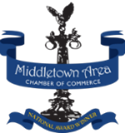In the modern workplace, the ability to communicate effectively across departments is not just beneficial—it’s essential. As organizations grow and evolve, the complexity of interdepartmental interactions increases, demanding more sophisticated communication strategies. By focusing on clear objectives, leveraging technology, and fostering a culture of openness, businesses can enhance collaboration and drive success. These strategies not only improve workflow efficiency but also contribute to a more cohesive organizational culture, where every team member feels valued and heard.
Enhancing Team Collaboration with PDF Sharing
When sharing documents within your team, PDFs are an invaluable tool. They maintain the original layout across different systems, ensuring everyone views the document as intended. By using a free PDF editor, you can add annotations like text, sticky notes, and highlights, turning a static document into a dynamic collaborative space. Simply upload your PDF online, make the necessary changes, and download it for seamless sharing. This approach not only preserves formatting but also enhances communication and collaboration across departments. Check this out for more information!
The Importance of Defining Clear Goals
Setting clear goals helps departments stay focused on a common objective, reducing misunderstandings and conflicts. When teams know what they’re working toward, collaboration feels more natural and effective. Open communication thrives when resources and expertise are shared across departments. Defined expectations prevent delays and keep workflows running smoothly. A strong sense of direction fosters trust, accountability, and long-term success.
Improve Team Collaboration with CRM Integration
Integrating customer relationship management (CRM) systems is a powerful strategy to ensure every department has access to consistent and up-to-date client information. By consolidating data from various sources into a single platform, you eliminate inefficiencies and streamline communication. For instance, when a marketing campaign generates new leads, these are instantly visible to the sales team, allowing for a seamless transition from prospecting to closing deals. CRM integration fosters a unified approach to customer management, driving improved satisfaction and business growth.
The Impact of Poor Listening on Interdepartmental Communication
The absence of active listening skills can significantly hinder collaboration and efficiency. When team members fail to truly listen, misunderstandings arise, leading to project delays and misalignment with organizational goals. By fostering an environment where active listening is prioritized, you can bridge communication gaps and enhance productivity. Implementing strategies like virtual coffee chats and regular feedback sessions can cultivate a culture of attentive listening, driving your organization toward greater success.
Enhance Collaboration with a Unified Documentation Hub
Creating a centralized space for meeting notes and documentation can significantly boost communication and collaboration. By utilizing tools that streamline the process of organizing agendas, minutes, and task assignments, you ensure all team members have access to the same information. This approach reduces the clutter of lengthy email threads and enhances accountability by allowing real-time updates and feedback. A shared documentation hub serves as a foundation for creative collaboration, enabling teams to focus on achieving their goals without the distraction of disorganized information.
Harnessing Feedback Loops for Continuous Improvement
Establishing a feedback loop is essential for fostering ongoing enhancement in communication. This process involves gathering insights from employees and customers, analyzing this data, and implementing changes based on the findings. By consistently engaging in this cycle, you build trust and enhance the overall experience for everyone involved. Utilizing digital tools can streamline this process, allowing for real-time tracking and adjustments. A well-executed feedback loop can lead to increased loyalty and advocacy, as stakeholders feel their voices are heard and valued.
Fostering Trust Through Transparent Leadership
Adopting a transparent communication style is crucial for leaders aiming to build trust and clarity across departments. By openly sharing information and the rationale behind decisions, you alleviate uncertainties and foster a sense of security among team members. Implementing regular updates, open forums, and feedback loops can transform transparency into a fundamental aspect of your leadership style. Clear and transparent communication leads to a more cohesive and effective team environment, where accountability and trust are paramount.
Adapting Conflict Resolution Policies for Modern Workplaces
In today’s dynamic work environment, it’s crucial to regularly reassess and update your conflict resolution policies to align with the ever-changing needs of your organization. By consistently reviewing these policies, you ensure they remain relevant and effective, addressing new challenges such as cultural diversity and technological advancements. This proactive approach not only helps in resolving disputes more efficiently but also fosters a culture of fairness and collaboration, reducing the likelihood of conflicts.
Implementing these strategies can transform the way departments interact, leading to a more integrated and efficient organization. By prioritizing clear communication, leveraging technology, and fostering a culture of trust, businesses can navigate the complexities of interdepartmental collaboration with greater ease and effectiveness.
Discover how the Middletown Area Chamber of Commerce can elevate your business and enrich our community with unparalleled resources and support!This Hot Deal is promoted by MIDDLETOWN AREA CHAMBER OF COMMERCE.

